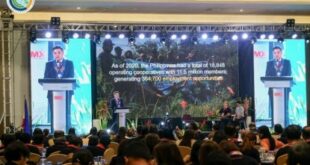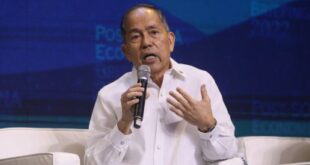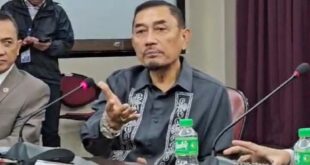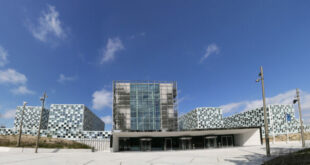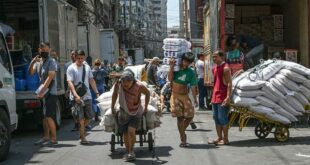
Managing the complexities of Philippine geography and its socio-economic realities will determine the fate of its energy transition, said Aboitiz Power Corporation (AboitizPower) President and CEO, Emmanuel Rubio, citing the need to increase and develop power plants and networks to strengthen energy accessibility.
“This transition is not just about changing how we generate energy. It’s about transforming our energy system to be more sustainable, equitable, and secure,” the executive said during a panel discussion of the Asia Zero Emission Community (AZEC) in Tokyo, Japan.
“But unlike many other regions with interconnected grids, the Philippines is an archipelago of over 7,600 islands, which presents unique challenges in delivering energy to all corners of the nation,” he explained. “Building transmission infrastructure across vast distances and numerous islands can be complex and expensive.”
A more interconnected grid will allow for higher penetration of electricity, facilitating its importation from neighboring areas or islands with surplus generation and, inversely, its exportation when there is excess generation.
“Millions of Filipinos still lack access to reliable electricity. This lack of access hinders development, education, and healthcare, particularly in remote and marginalized communities. We must ensure that the benefits of the energy transition reach everyone, not just a select few,” Rubio said.
As of June 2023, the Philippine Energy Department said that an estimated 2.454 million Filipino households remain unserved.
It also projected electricity demand to grow by 6.6% annually until 2040, which coincides with a high growth path target for the country’s continued development.
As power industry estimates foresee that the country would need 600 to 700 megawatts of new generation capacity every year, Rubio remarked on solutions and opportunities to meet energy needs.
“We need to invest in a mix of renewable energy sources, traditional generation, and energy storage solutions to ensure a stable and secure energy supply,” he maintained. “Upgrading our grids, building interconnections between islands, and implementing smart grid technologies are crucial for integrating renewable energy and improving energy access.”
“Collaboration between governments, private companies, and communities is key to financing and implementing energy transition projects,” he added. “Researching and deploying next generation clean energy technologies can [also] accelerate the transition and improve efficiency.”
In line with the Philippine government’s goal of having a 50% share of renewable energy in the country’s power generation mix by 2040, AboitizPower will continue to invest in renewables en route to reaching at least 4,600 megawatts, or 50% of its generation portfolio, by the next decade.
Close to 1,000 megawatts of projects are already in the pipeline, encompassing various technologies like solar, hydro, geothermal, wind, and energy storage systems.
AboitizPower expects its 159 MW peak Laoag solar plant in Pangasinan to come online in 2024. It has also embarked on the construction of its 172 MWp solar power project in Calatrava, Negros Occidental and its monumental 211 MWp solar power project in Olongapo, Zambales.
On geothermal energy, a 17 MW binary plant in Tiwi, Albay is expected to be operational by early 2024. On wind, AboitizPower’s 206 MW peak San Isidro Wind Power Project with Vena Energy and Vivant Energy Corporation in Northern Samar, Visayas is targeted to commence with its commercial operations in the first quarter of 2025. Another wind venture with Vena Energy for a 102 MWp project in Rizal and Laguna is also expected to begin commercial operations in the same year.
The Company had also commenced strategic partnerships with Japanese institutions JERA and the Japan Bank for International Cooperation.
With JERA, AboitizPower is exploring the potential of liquified natural gas or LNG to act as a transition fuel amidst the influx of more renewable energy sources in the Philippine power mix.
“The Philippines, like many Asian nations, faces a pressing challenge: balancing its energy needs with environmental responsibility. We require a diverse and resilient energy mix to fuel our thriving economies and growing populations. This is where LNG emerges as a valuable bridge in this transition,” Rubio told the AZEC.
“Modern gas-fired power plants can quickly respond to fluctuations in demand, unlike their coal counterparts. This agility complements the intermittent nature of renewable energy sources like solar and wind, ensuring a secure and reliable energy supply,” he added.
AZEC is a platform consisting of Asian countries that are promoting decarbonization, making use of Japan’s resources to enable financial, technological, and human resource support, as well as policy coordination with partner countries. It aims for energy transitions tailored to each country’s circumstances.

— Martin Sadongdong
*****
Credit belongs to: www.mb.com.ph
 Atin Ito First Filipino Community Newspaper in Ontario
Atin Ito First Filipino Community Newspaper in Ontario

